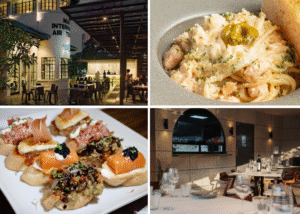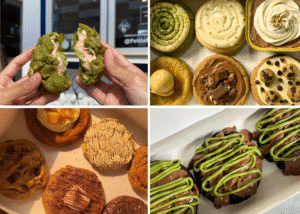In Singapore’s competitive F&B industry, handling online orders from multiple delivery apps can become overwhelming. Restaurants often juggle several tablets and systems, leading to confusion, delayed orders, and operational inefficiencies. Fortunately, a dedicated restaurant online ordering system can unify these platforms, improving order accuracy and streamlining workflows.
The Delivery App Landscape in Singapore’s F&B Industry
Singapore’s food delivery market is dominated by key players such as GrabFood, Foodpanda, and Deliveroo. These platforms are essential channels for restaurants to reach wider audiences and boost sales.
Popularity and Reach of Major Delivery Aggregators
GrabFood, Foodpanda, and Deliveroo collectively capture a significant market share, with millions of daily users in Singapore. Their strong user base enables restaurants to maximize exposure and cater to diverse customer preferences.
Common Challenges in Managing Multiple Apps
Managing orders across these platforms presents challenges:
- Order mix-ups: Different apps send orders separately, increasing manual processing errors.
- Multiple tablets: Restaurants often need one tablet per app, cluttering the service area.
- Notification fatigue: Constant alerts from different devices can overwhelm staff, causing delays.
Why a Dedicated Restaurant Online Ordering System Matters
Using separate apps for each delivery service satisfies basic needs but lacks efficiency. A specialized online ordering system addresses these pain points by consolidating operations.
Centralized Order Management
With real-time order synchronization, all orders from GrabFood, Foodpanda, and Deliveroo appear together on a single dashboard. This centralization ensures staff can view and manage orders quickly without switching platforms.
Reduced Manual Errors and Order Mix-ups
Automation minimizes human intervention, cutting down cancellations caused by missed or duplicated orders. This improves customer satisfaction and preserves reputations.
Multi-Aggregator Integration: Connecting GrabFood, Foodpanda, and Deliveroo Seamlessly
Seamlessly integrating multiple delivery aggregators into one system is a game-changer for operational efficiency.
Omnichannel Order Synchronization
Orders from all platforms sync instantly, giving kitchens a unified view. This omnichannel approach reduces confusion and helps prioritize orders.
Integration with OMS and POS Systems
Linking the ordering system with existing Order Management Systems (OMS) or Point of Sale (POS) platforms enables real-time updates on inventory, sales, and order statuses, streamlining back-of-house operations.
Efficient Delivery Tablet Management and Its Impact on Restaurant Operations
Consolidating delivery orders minimises device clutter and enhances workflow.
From Multiple Tablets to One Device
Reducing from multiple delivery tablets to a single device lessens physical clutter and confusion. Staff can manage all incoming orders efficiently in one place.
Real-Time Reporting and Order Tracking
Managers and kitchen staff gain instant insights on order progress and performance metrics, allowing timely interventions and better resource allocation.
Case Studies: Singapore Restaurants Successfully Streamlining Delivery Operations
Case Study 1: Increased Order Accuracy and Speed
A mid-sized café in Singapore integrated its OMS with GrabFood, Foodpanda, and Deliveroo through a unified online ordering system. This resulted in a 30% boost in order processing speed and a 25% reduction in errors, translating to smoother kitchen workflows and happier customers.
Case Study 2: Reduction in Delivery Cancellations
An established F&B brand adopted real-time synchronization across all delivery platforms to address frequent cancellations. Within three months, cancellations decreased by 40%, improving both customer trust and delivery efficiency.
Key Features to Look for in a Restaurant Online Ordering System for the Singapore Market
Multi-Channel Dashboard
Look for a system that consolidates all orders into a single dashboard, giving a comprehensive overview of real-time sales channels.
Seamless Integration with Popular Aggregators
Ensure the system supports native integrations with GrabFood, Foodpanda, and Deliveroo to avoid manual syncing and ensure reliability.
Real-Time Inventory and Menu Sync
Automatic inventory updates help prevent out-of-stock orders, improving customer experience and minimizing order cancellations.
By adopting an integrated restaurant online ordering system, Singapore F&B businesses can greatly improve operational efficiency, reduce ordering errors, and provide a superior customer experience amidst the bustling online delivery landscape.
Frequently Asked Questions
How can Singapore restaurants handle orders from multiple delivery apps without errors?
Restaurants can use an integrated online ordering system that centralizes orders from GrabFood, Foodpanda, and Deliveroo. This system synchronizes orders in real-time to the kitchen, reducing manual errors and miscommunication.
What are the benefits of using a single tablet system instead of multiple delivery tablets?
Using a single tablet system reduces hardware clutter and notification confusion. It improves kitchen efficiency by consolidating all orders in one place, enabling staff to manage workflows better.
Can restaurant online ordering systems integrate with existing POS or OMS platforms?
Yes, many restaurant online ordering systems offer integration with POS and OMS platforms. This provides real-time order processing, inventory management, and detailed reporting, streamlining restaurant operations.
How do integrations with GrabFood, Foodpanda, and Deliveroo help reduce order cancellations?
Integrations ensure real-time synchronization of orders, improving accuracy and reducing delays. This minimizes mistakes that often lead to customer cancellations.



